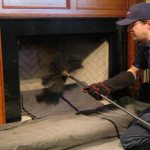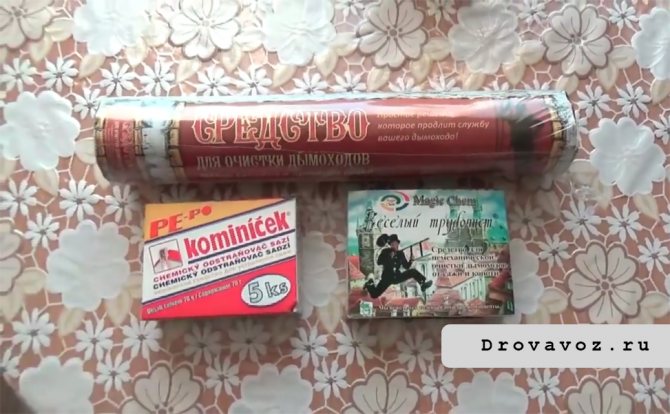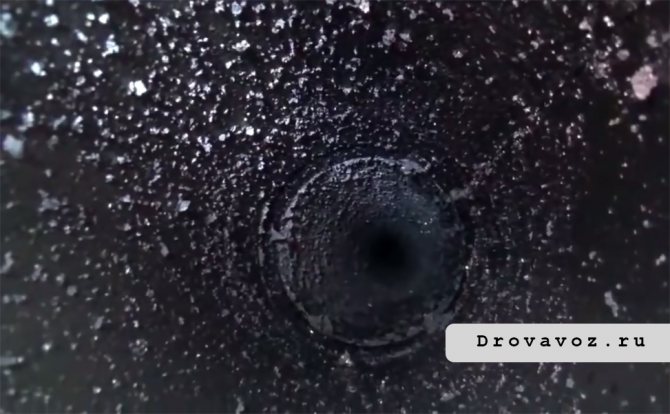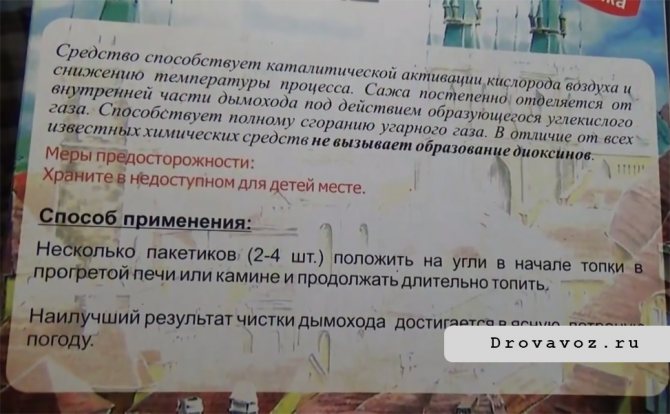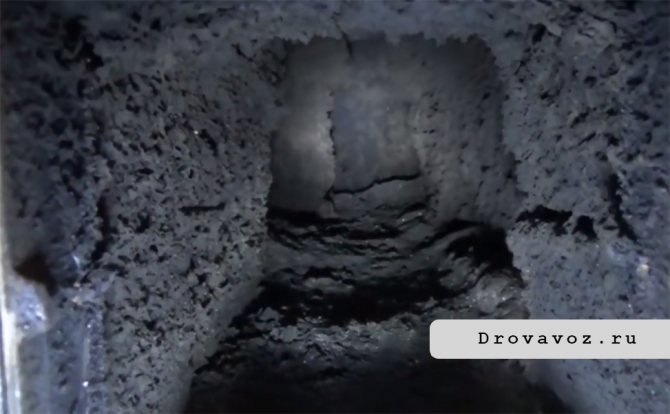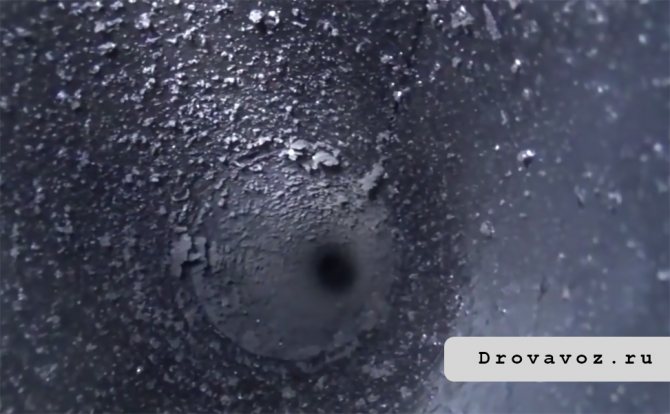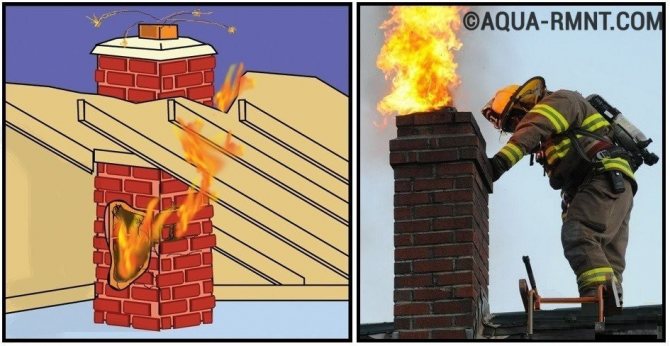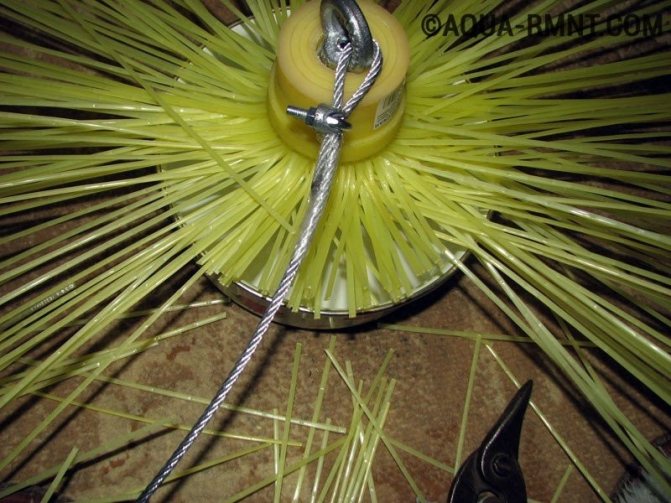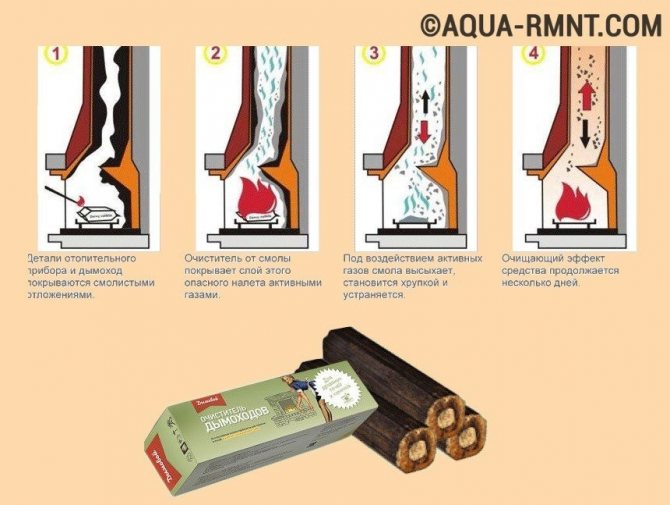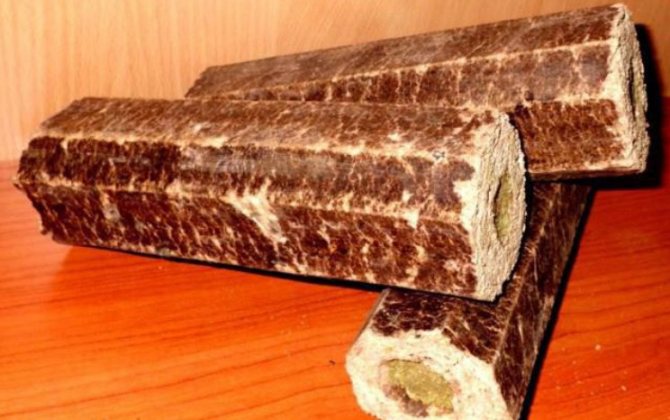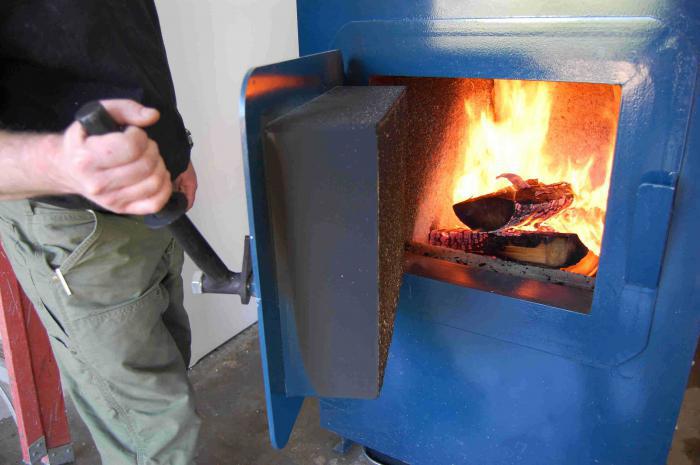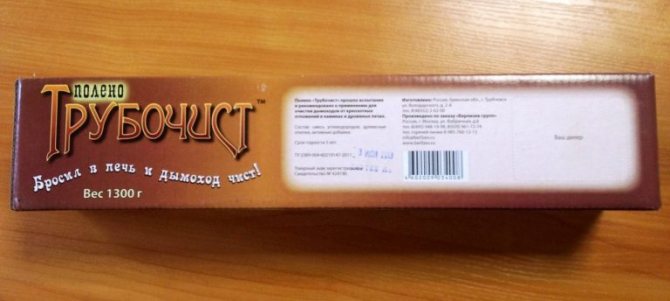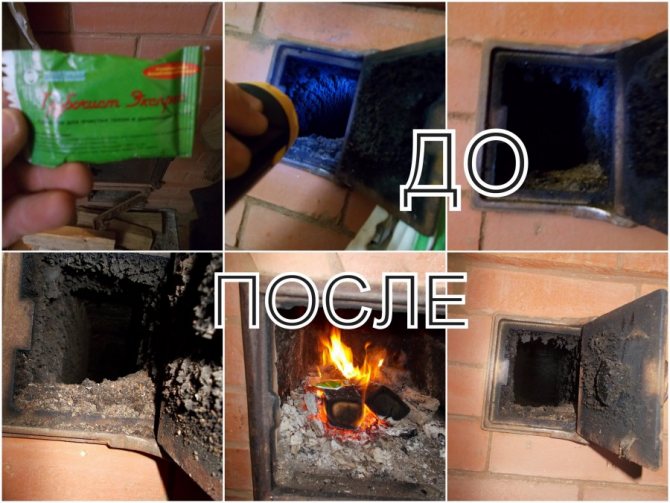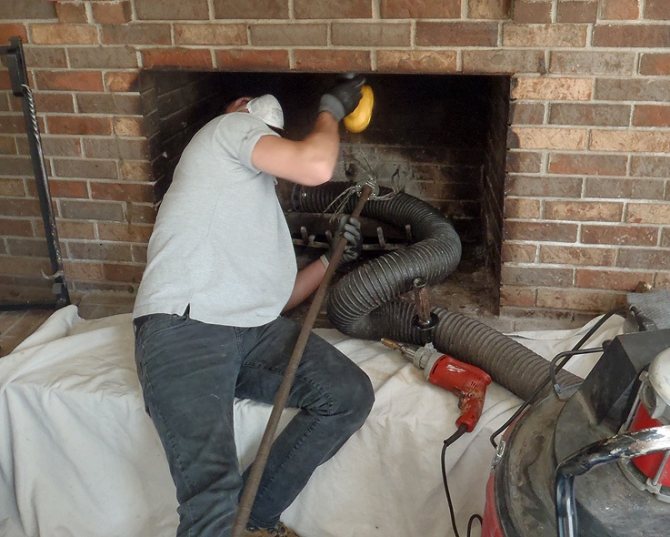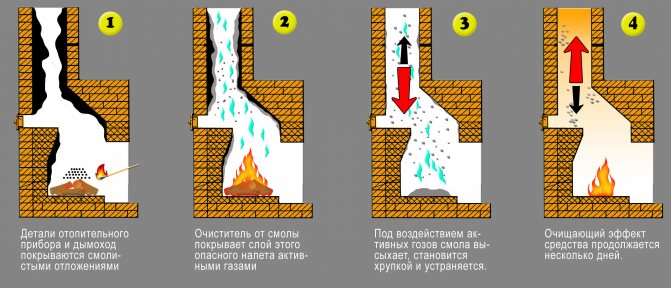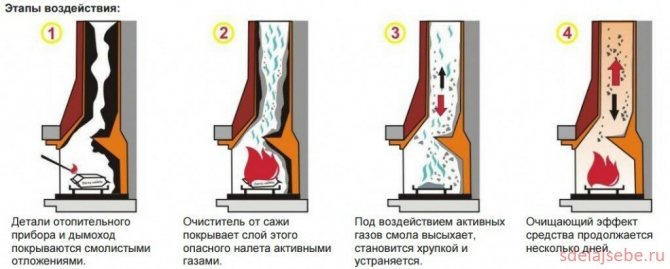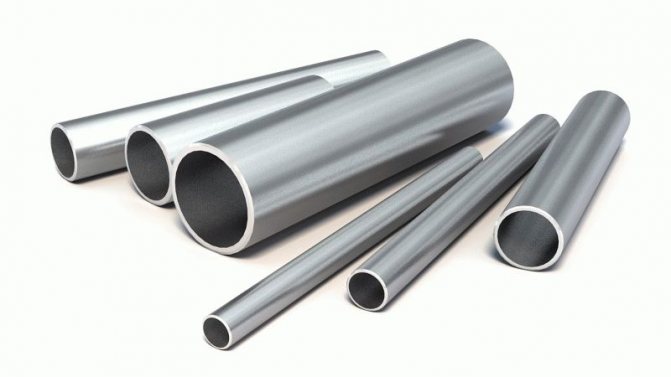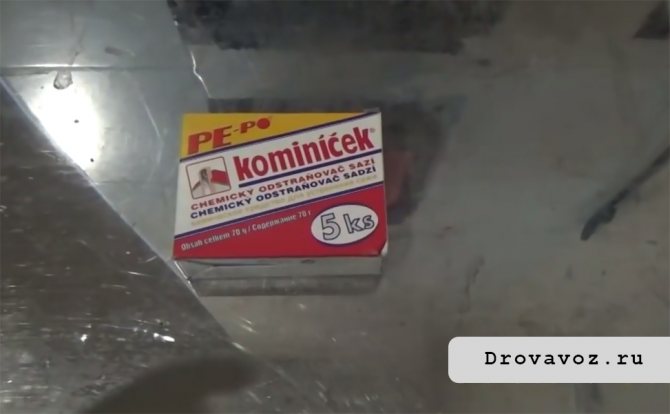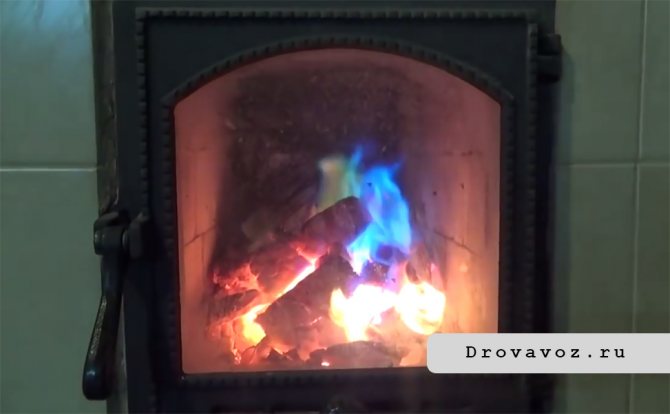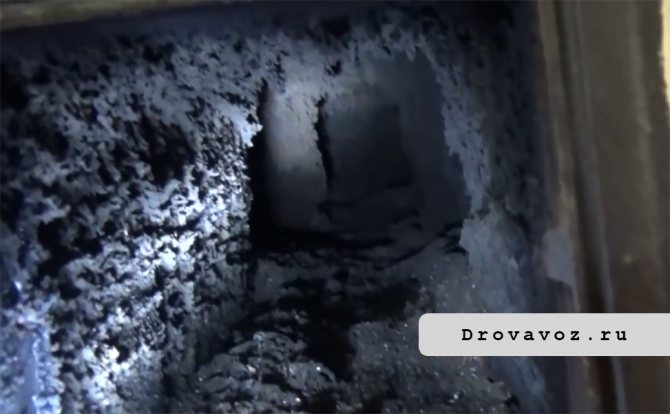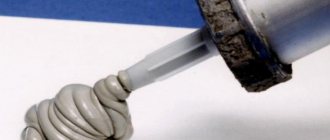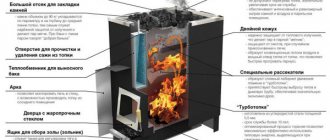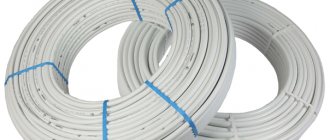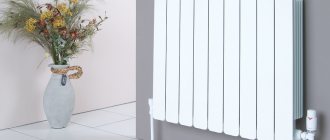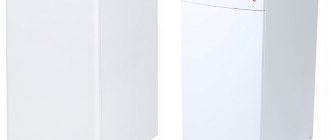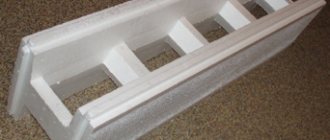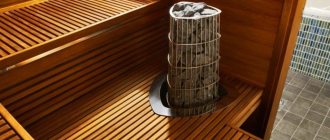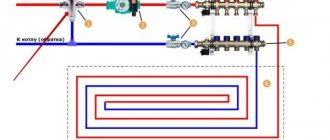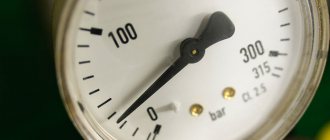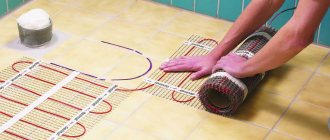Fireplaces and wood-burning stoves are rarely used in modern homes for heating due to the fact that high-tech methods of maintaining heat are much faster, more convenient and do not require such physical costs. But, despite this, fireplaces do not lose their popularity, creating a unique emotional atmosphere in country houses or city apartments.
One of the important procedures to ensure the safe use of a wood-burning stove or fireplace is to regularly clean the chimney. This is required regardless of the design of the chimney, through the wall or through the roof. Why clean the chimney and how often should it be done? How effectively can this procedure be carried out using a chimney cleaner "Chimney sweep"?

Why you need to clean the chimney
To understand why it is necessary to clean the chimneys of stoves and fireplaces from soot, first of all, you need to know what happens in the chimney when using any type of solid fuel material, including firewood. When a fire burns in a fireplace or stove, so-called combustion products, soot and soot are actively released. All this, together with the smoke, gets upstairs, directly into the chimney chimneys and settles in a soft greasy layer on the walls of the chimney. The more time has passed since the last cleaning, the less space remains in the chimney for extracting smoke and combustion products.
Of course, correct operation, as well as adherence to simple principles for the selection of firewood for a stove or fireplace, can significantly slow down this process:
- You do not need to burn anything in the stove (fireplace) except firewood. It is better to try to dispose of any household waste, even paper waste, in other ways.
- Choose firewood exclusively for those tree species that contain a minimum of resin. These are, for example, dry wood of alder, aspen, oak, birch. Firewood from fruit trees, which are so loved for their amazing aroma, released during combustion, is slightly worse in quality. Outsiders in this list, experts consider conifers, which emit a large amount of soot, due to the high content of natural resins. It is also not recommended to often use not the most expensive, but quickly burning out poplar and willow.
- Do not forget about regular cleaning of the blower.
Compliance with all of the above, together with prevention, will allow you to avoid serious chimney clogging for years. But, despite this, cleaning the stove (fireplace) pipe still cannot be avoided. In addition to the settling soot, blockage can form from the outside if debris or a foreign object gets into the pipe. Therefore, professionals involved in the repair and cleaning of the chimney often recommend checking the chimney in the fall and spring.
How to understand that you need to clean the chimney? The first sign that the procedure cannot be postponed will be a visible deterioration in traction. The release of the main amount of smoke and smell not through the chimney, but into the room, sparks flying from the fireplace - a signal that the chimney is dirty. Draft, slow and insufficient, not only creates smoke, but can also lead to intoxication with carbon monoxide components. In addition, a spark emitted from the fireplace can cause a fire or injury.
What else is so dangerous about a polluted chimney? Combustion of accumulated soot can easily lead to cracking and destruction of the chimney walls. The conclusion that can be reached on the basis of all of the above: chimney cleaning is an important procedure, on the thoroughness and regularity of which the good operation of stoves and fireplaces depends, as well as the safety of the house.
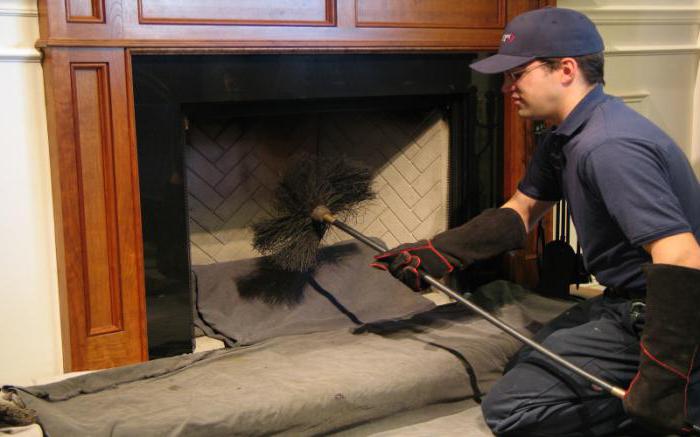

Chemicals in the fight for purity
With the regular use of industrial preparations, it will turn out to postpone the capital cleaning of the chimney. Reagents are added to the furnace and, during combustion, they release components that convert amorphous organic deposits into a solid fraction. The soot loses its adhesion to the walls and crumbles downward.Subsequently, it is cleaned from the firebox.
Chemicals are available in the form of briquettes, powder or liquid. The characteristics of the most popular drugs and recommendations for how best to clean the chimney from soot are given below.
Smoke box - the cleaner is easy to use and has a cumulative effect.
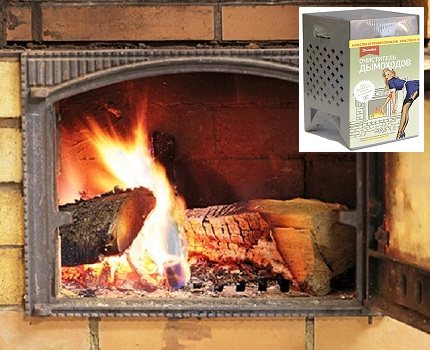

How to use: remove the labels, put the box in the firebox, pour over it with liquid (included in the set) and set it on fire. Burning time - 1-1.5 hours
Activated carbon and metal salts that are part of the box "Smoke", when burned, react with a tar deposit - moisture evaporates from the soot, the deposits become brittle and burn.
You should not count on an immediate result - the effect of the drug continues for another 2 weeks, a noticeable effect will come in 2-3 months.
The Dymova log is produced in the form of a bar that imitates natural wood. It is laid along with the firewood when kindling. During combustion, a beautiful turquoise flame is observed - a sign that the cleaning components have entered a thermal reaction. The advantage of using logs is aesthetics and an unusual visual effect.
Similar products: Poleshko, Vortex log, Chimney sweep log.
The Dymovoy granular cleaner is designed for servicing pellet stoves and boilers. The drug is mixed with fuel granules and poured into the furnace. Suitable for use in traditional wood-burning stoves.
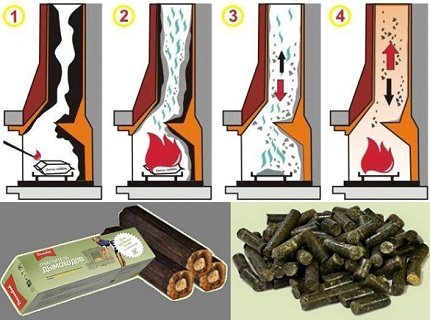

Regardless of the form of release, the principle diagram of the work of the reagents is the same: 1 - kindling the preparation, 2 - coating the resin with an active gas, 3 - drying of the plaque, 4 - gradual cleansing effect
Dymova's products have proven themselves well as a means of preventing and cleaning moderate pollution.
The Czech-made drug "Kominichek" is produced in the form of a powder, packaged in sachets of 14 g.
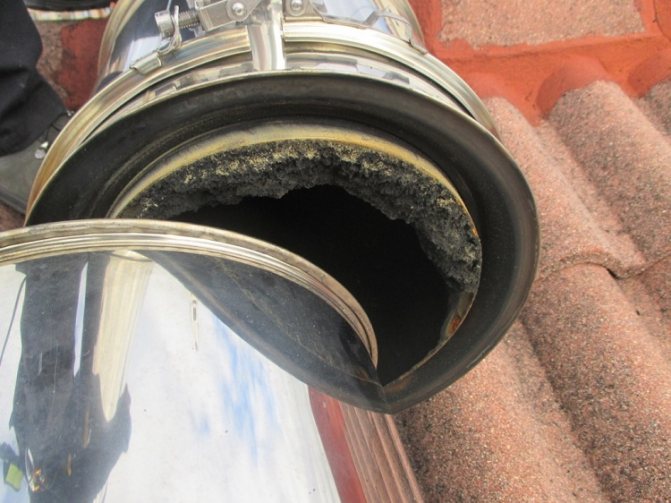

Features of using a cleaning reagent:
- designed to remove soot, the layer of which is up to 2 mm;
- the recommended refueling dose is 1 bag / 1 kg of firewood;
- use with an open firebox (fireplaces) is unacceptable - when burning, the chemical composition exudes a pungent odor.
The dosage of the furnace cleaner for preventive purposes depends on the type of furnace equipment:
- fireplace insert and local stove - 14 g;
- boiler serving one floor - 14 g;
- central heating boiler - 28 g.
The manufacturer strongly discourages changing the dosage of the drug. If it is heavily soiled, it is better to repeat the treatment twice a month. The bag of "Kominichek" is thrown into the firebox without opening it as a whole.
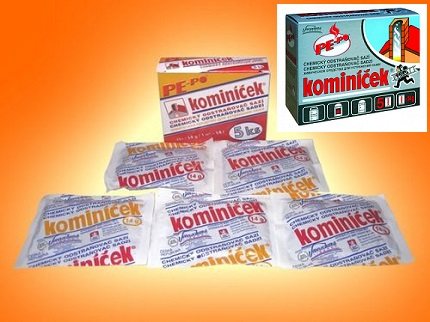

The composition of the cleaner: copper chloride and activated carbon. The soot is removed as a result of a catalytic reaction - the heated granules melt and release chemical components that transform the soot into oxide
The Lithuanian company has developed a line of effective reagents aimed at destroying creosote - resinous components that, when in contact with water vapor, create a sticky base for soot to adhere.
Popular Hanza products:
- "Log chimney sweep";
- concentrated granular preparation;
- resin cleaner in sachets;
- pellets for servicing heating devices operating on granular fuel.
Hanza-cleaners contain a complex of crystals. One group of components acts as a catalyst, converting wood soot into combustible gases. Other substances produce haze at high temperatures - hot vapors destroy the structure of the tar deposits.
Image gallery
Photo from
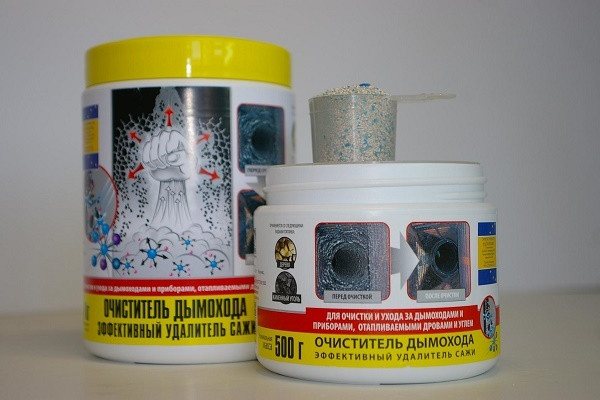

Products of the Lithuanian brand Hansa are designed for perfect cleaning of chimney ducts, stove fireboxes, fireplaces, solid fuel boilers from carbon deposits, soot, creosote, tar
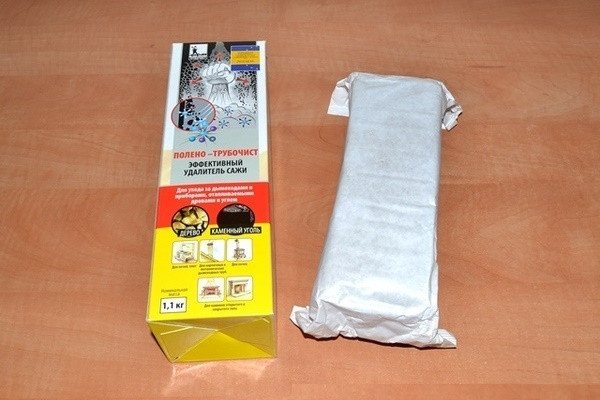

Compressed into logs and free-flowing chemicals from Hansa quickly and flawlessly clean chimneys and stoves without the use of mechanical means
Read more: How to glue tiles on drywall
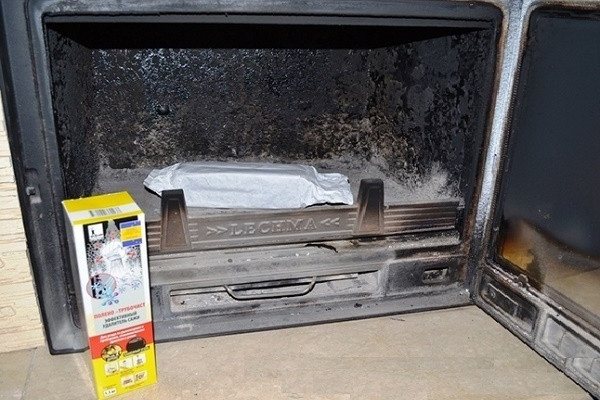

In one single use, the "Chimney sweep" log removes soot and resinous formations clogging the chimney
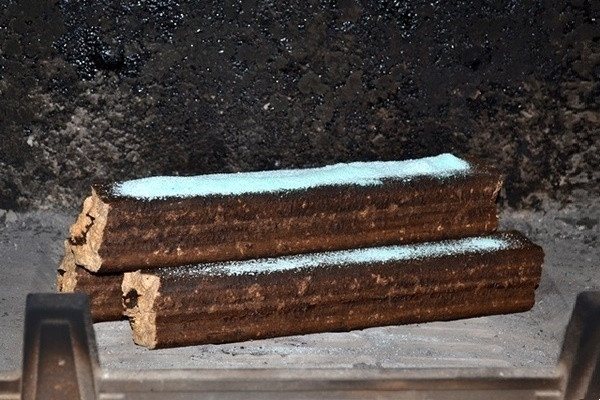

Powdered cleaning agent is added to regular wood to prevent soot from forming and depositing on the walls of the flue system.
Products of the Lithuanian brand Hansa
Log "Chimney sweep" from the Lithuanian manufacturer
Using braces
Prevention of deposition of combustion products
Hanza loose soot remover is versatile. The product is suitable for fireplace inserts, solid fuel boilers, wood stoves and open fireplaces. The expiration date of the purifier is unlimited.
The powdery reagent is easy to use - one or two measuring cups are added to the fuel in the combustion chamber. At the first stage of use, it is recommended to “fill” each firebox to ensure a good quality of cleaning with a cleaner.
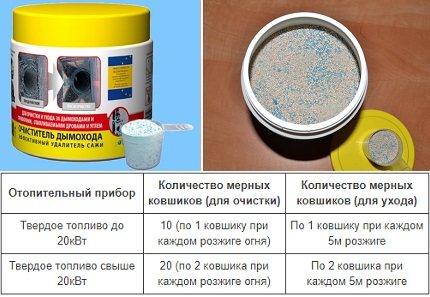

The calculation of the volume of the mixture is based on the power of the furnace and the degree of pollution. To prevent chimney clogging, the frequency of use of "Hanza" is every 4-5 kindling
The powder is packaged in plastic containers or bags of 50 g. The volume of one bag corresponds to the capacity of a measuring cup. "Log-chimney sweep" burns out in 2 hours, validity period - 2 weeks. To increase efficiency, it is advisable to repeat the preventive cleaning procedure. It is not necessary to remove the packaging when placing in the firebox.
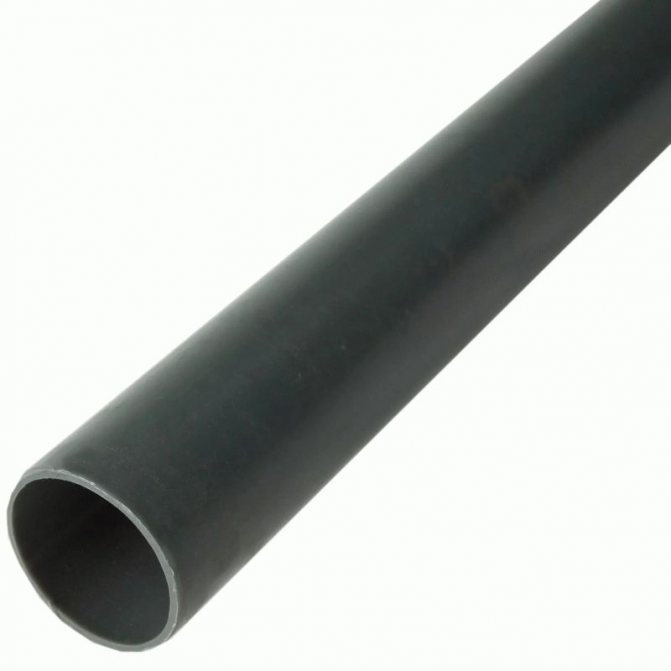

Granular "Hanza" provides cleaning not only for the chimney of the pellet boiler, but also for the burner, door glass and heat exchanger. The product is not suitable for wood and coal fired equipment.
Recommended proportions based on the power of the boilers:
- up to 10 kW - 1 kg;
- 10-20 kW - 2 kg.
For the purpose of prophylaxis, as 200 kg of fuel is consumed, 250 g of the purifier is added.
Spalsadz (Poland) - activator for complete combustion of resinous deposits and soot. Reagent in the form of a green powder, consisting of inorganic salts. When the temperature rises to 350-600 ° C, the agent decomposes into catalytic components that contribute to the decomposition of organic matter to water and carbon dioxide.
Image gallery
Photo from
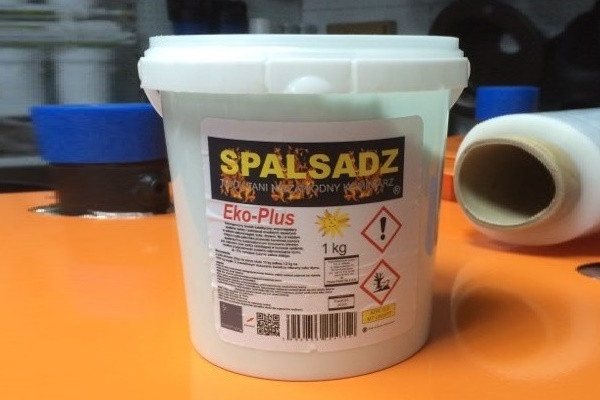

A Polish-made tool of the Spalsadz brand in the most rational way eliminates the problems traditional for solid fuel units
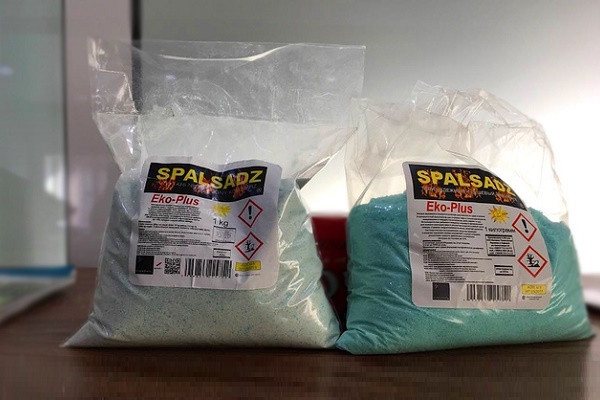

Regular use of Spalsadz reduces the build-up of tar deposits on the flue gas duct and eliminates the emission of carbon monoxide into the environment
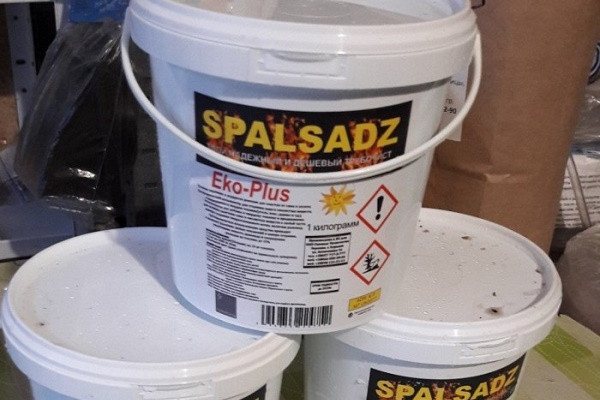

The use of the composition prevents narrowing of the chimney channel, increases the heat transfer of the unit by 20%
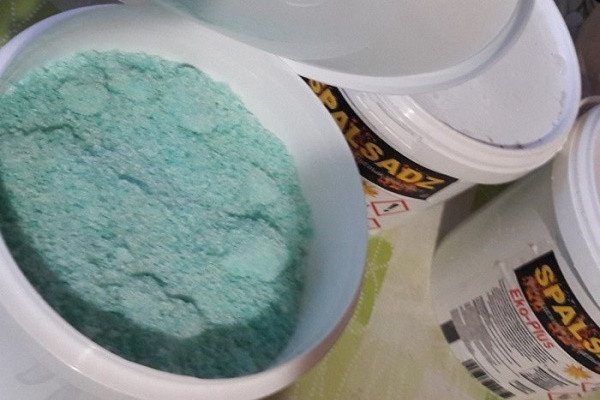

Spalsadz is a powdery catalyst that fully burns resinous substances and soot.
Spalsadz chimney cleaners
Packaging the product in plastic bags
Effective composition for cleaning boilers and furnaces
Powder catalyst application
Features of the Spalsadz catalyst:
- non-explosive and non-flammable;
- does not react with ceramics, therefore deformation of ceramic elements is excluded;
- increases the efficiency of heating devices - fuel consumption is reduced by 20%;
- not toxic;
- drug consumption - 1-2 kg / 1 ton of fuel (depending on the level of pollution).
The generated heat does not "escape into the chimney" and the downtime for cleaning the boiler is reduced. An additional plus of Spalsadz is the reduction of sulfur dioxide emissions into the atmosphere.
Chemicals for routine cleaning of chimneys of solid fuel boilers, stoves and fireplaces attract with their simplicity, reasonable cost and ease of use.
Owners do not have to purchase special equipment, get their hands dirty with soot and make serious physical efforts to return the equipment to working capacity.
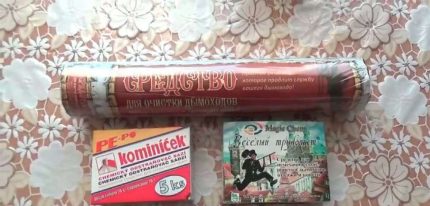

Products for removing soot and carbon deposits from chimney systems are produced in the form of powder, granules or briquettes, resembling a classic wooden log in shape. Efficiency does not depend on the form of release
The purchased preparations are simply poured into the fire in a certain volume or placed together with the firewood when kindling. In the process of thermal action, the working components react with soot or resinous elements and contribute to their decomposition.
The gaseous part, together with the smoke, escapes into the atmosphere, and the dry part simply crumbles to the bottom. Then it is removed along with solid combustion products and ash.
Many domestic and European companies are engaged in the production of cleaning chemicals. Their products are in stable demand and do a good job with the tasks.
Polish Sandpal is a green, non-explosive and non-flammable fine-grained powder.
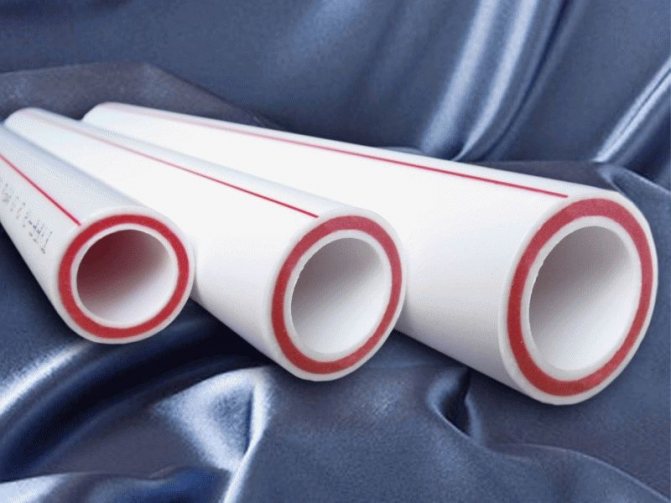

It consists of a complex of inorganic salts and serves as a catalyst for the afterburning of soot that has settled in the chimney part of fireplaces and stoves. Effectively affects organic matter, decomposing it to water and carbon dioxide.
In the amount of 1 tablespoon, it is poured into a well-heated combustion chamber directly on the smoldering parts of the fuel. If kindling is carried out with a dry resource, the dose is slightly reduced, and for a wet one with a weak, poorly expressed combustion coefficient, it increases by 10-15%.
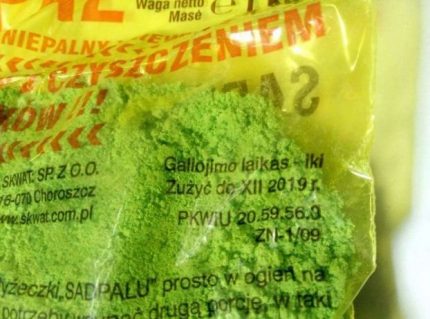

The manufacturer recommends that customers use the product in strict accordance with the instructions. Violation of proportions negatively affects the cleaning procedure and does not bring the desired results
In the process of oxidation of soot, large fractions of the resulting substance fall to the bottom of the combustion chamber, and small fractions, together with flue gases, rise up and go into the exhaust pipe.
By using Sadpal cleaning powder you can:
- optimize the consumption of coal and firewood;
- reduce the risk of ignition of residual soot deposits;
- reduce the amount of sulfur emissions into the atmosphere;
- to protect metal fragments located in the chimney part from corrosive manifestations;
- protect the ceramic elements of the system from cracking.
With regular maintenance, the pipe will stop clogging with combustion waste, will not suffer from tarry deposits and will not require complex and labor-intensive mechanical cleaning.
Hansa concentrate is manufactured using German proprietary technology at the production facilities of a plant in Lithuania.
It is a fine-grained blue-white powder from a mixture of crystals, packaged in plastic jars with lids or economical high-strength plastic bags.
Cleaning methods
Depending on what means are used to clean the chimneys of stoves and fireplaces from soot, all methods of removing dirty sediment from the chimney can be divided into three groups:
- The oldest known method is mechanical, or traditional chimney cleaning. The procedure is carried out with the help of special "chimney sweep tools": various brushes and "cores", a rope with a heavy weight to break through the blockage. Despite the outward primitiveness, such cleaning of chimneys of stoves and fireplaces from soot gives the best effect and allows you to cope with the most advanced types of blockage of the chimney.
- Thermal cleaning is also a rather old method, proven over the years. It consists in “burning out” the soot by heating it with well-dried pine wood. Technically, making a fire and waiting for the result is the easiest and most inexpensive way. But also the most dangerous: with a large accumulation of soot, a fire in the chimney is practically a small explosion.A pipe, especially a masonry pipe that has small cracks, may simply fall apart. Therefore, experts advise using this method only as a preventive measure, provided that a large amount of soot and soot has not had time to settle in the chimney.
- Chemical (non-mechanical) cleaning. Considering the use of such a tool as a chimney sweep log for cleaning a stove (fireplace) pipe, reviews of which are found in most construction forums, it is worth considering chemical methods in more detail. Applying the chemical properties of substances for dissolving or drying soot in a chimney began many decades ago, with the so-called folk remedies. For example, the most famous life hack invented by our great-grandfathers is burning potato peelings. Also, the chimney was often cleaned out by pouring ordinary salt onto the hot firewood. Today, along with folk remedies, a huge number of modern products of chemical laboratories have appeared in stores, intended for cleaning chimney chimneys in a non-mechanical way. Such products are available in the form of pressed bars (or logs), as well as in the form of dry powdery masses. It differs from traditional methods of modern "chemistry" by the need to strictly follow the instructions and observe the dosage, as well as the smaller amount of the substance used at a time.
The "Chimney sweep" log, which is often recommended on construction sites on the Internet, belongs to the means of chemical cleaning. What is this product and how should it be used to effectively get rid of soot deposits in the chimney?
![], chimney pipe](https://iwarm.decorexpro.com/wp-content/uploads/truba-dymohod.jpg)
![], chimney pipe](https://iwarm.decorexpro.com/wp-content/uploads/truba-dymohod.jpg)
Danger of clogging of pipes and the need to clean them


Chimney soot can explode and cause fire
The danger of chimney clogging should not be underestimated. This situation can lead to tragic events.
Consequences of operating the furnace with a soot-clogged pipe:
- Combustion. The creosote accumulating in the channel is combustible and forms a high temperature flame. This is fraught with fire, first on the roof, and then throughout the house. Sparks can hit nearby buildings and flammable objects outside. The scale of the destruction could be catastrophic.
- Explosion. The soot explodes when heated strongly. At the same time, there is a great risk that the pipe will scatter into fragments, which will injure people, animals, damage the roof and yard objects.
- Reducing the intensity of fuel combustion. The result is a low water temperature in the heating system. This is not only discomfort, but also the formation of dampness, mold, the development of a number of diseases in residents.
- Allergic reactions in humans and pets. Small particles of soot and dust fall into the firebox, and from there into the apartment, giving its inhabitants a lot of trouble, including the formation of a deposit of dirt on all things.
- Risk of carbon monoxide poisoning. With a large volume of fuel, the gas mixture does not have time to pass through the narrow passage, part of it comes out.
- Equipment breakdown. If the heat generated during fuel combustion is not removed from the furnace, the boiler will overheat and fail. This is very undesirable in winter.
To clean the chimney pipe in a private house, there is no need to wait for the deadlines set or recommended by the manufacturers. It is better to do this more often, without bringing the situation to a critical state.
Log "Chimney sweep": what is it
What is a patented non-mechanical chimney cleaning solution? Its brand name is "Log Chimney Sweep" (reviews of this tool are given below). Externally, it is a pressed bar, measuring 25x8x6 cm, wrapped in a protective paper wrapper. Sold in original packaging containing product information and procedure instructions.
The product is recommended for cleaning any type of chimney and chimney, even a complex structure, for example, a curved chimney through a wall. The substances that make up the logs, during combustion, emit volatile chemicals that enter the chimney along with smoke and hot air and affect the layer of soot that has accumulated there. As a result, the impurities in the chimney dry up and fall off the walls of the chimney.
The "Chimney sweep" log is intended for fireplaces or stoves using coal or wood raw materials. It is strictly forbidden to use this product in ovens equipped with special devices, as well as operating on gas or electricity.
Important! Often the question arises as to whether a tool such as a chimney sweep log can completely replace mechanical cleaning. Reviews of professionals about this tool warn: such cleaning can only be of a preventive nature. The use of logs for a long time eliminates the need to contact a specialist who is engaged in cleaning the chimney. However, it will not be possible to completely abandon mechanical cleaning.
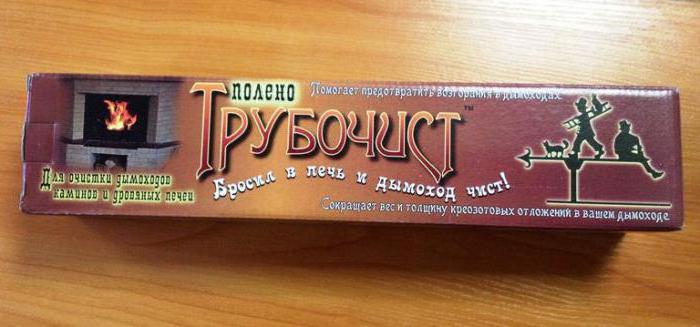

Why is the chimney clogged?
It is not difficult to guess about the clogging of the chimney system. This is clearly indicated by the dramatically reduced draft in the firebox and a noticeable cooling in the rooms.
Read more: What is a mobile air conditioner, device and principle of operation
Problematic primary ignition of the fuel resource and arbitrary attenuation of the flame also indicate a decrease in the patency of the channels and a violation of the correct air exchange.
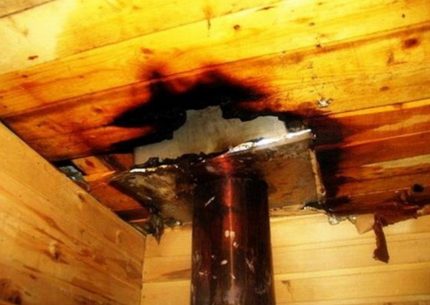

Chimney cleaning, carried out incorrectly, entails additional problems. A master who does not have the proper experience can seriously damage the pipe and even violate the integrity of the entire system. The results will be disappointing
A signal that the chimney needs cleaning is a changed shade of the flame in the combustion chamber. A fire that turns into a juicy orange color as it burns clearly implies a problem.
The unexpected smell, uncharacteristic for the normal operation of the furnace, speaks of the same thing.
The composition of the tool "Chimney sweep"
The log "Chimney sweep" is declared by the manufacturers as a product that is safe for humans and pets. As part of artificial woods:
- Charcoal wax (low carbon dust content).
- Natural wood sawdust.
- Natural substances: urea and amorphous silica.
- Ammonium sulfate is a substance that, in fact, is a compound of sulfuric acid and is actively used for industrial needs. Including, in order to disinfect water in city water supply systems.
- Sodium sulfate (anhydrous), another commonly used sulfuric acid compound (sodium salt). In addition to industrial purposes, this substance is officially a food additive, and was previously used in pharmacology.
- Substances in the composition that may cause concern are phosphorus oxide and zinc chloride: in concentrated form, both are contraindicated for contact with the mucous membranes of the eyes and human skin. Therefore, it is not necessary to remove the log from the protective paper shell. Better yet, protect yourself with ordinary rubber gloves.
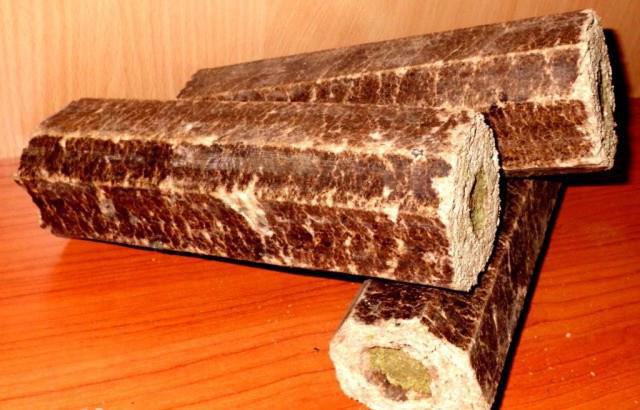

Do I need to lay firewood together with the logs "Chimney sweep"
The use of the "Chimney sweep" tool is quite acceptable without "support" in the form of coals or wood firewood. However, hot coals left over from the previous fireplace insert (stove) or dry firewood placed before cleaning the chimney with the Chimney Sweep log will greatly enhance the effect of using this tool. When cleaning the chimney with a log "Chimney sweep" in combination with firewood (coals), the bar is laid out on top.
Prohibited! Burn more than one log in combination with hot coals.
Existing methods of cleaning the chimney and description of the processes
A means for cleaning chimneys from soot is selected based on an assessment of the thickness and density of the soot layer, the height and shape of the pipe, the availability of available and professional tools, and our own physical capabilities. You should choose a method that, with minimal risk, will bring the highest quality result. It should be remembered that negligence is fraught with damage to the heating system and injury.
Mechanical method
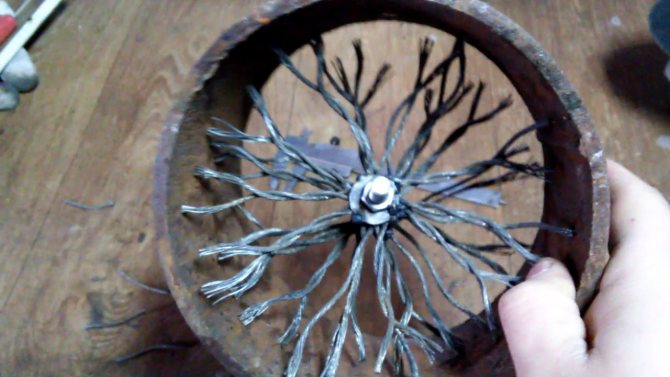

For mechanical cleaning, you need a thick wire brush
The most effective method is to remove soot by applying physical effort. This is done with hard-bristled brushes. If the channel is heavily clogged, it is necessary to have several brushes for its gradual expansion. The method of work is simple - the ruff moves up and down, the pile cleans off the soot, which is poured down. Removal of soot can be carried out both from the top and from the bottom, if the chimney design allows.
There are such types of ruffs:
- On a rope with a heavy load under the tool. Here, gravity does some of the work. After the next rise, the device is released and flies through the pipe, capturing carbon deposits.
- On an assembly bar. The device is suitable for removing deposits from straight canals. The sections are wound as they deepen, similar to a drilling rig.
- On a flexible shaft. This is the most versatile device that can be used to clean chimneys of any configuration. The cable is flexible enough to go through knees and contours, and stiff enough not to crumple under load. Thanks to these properties, there is no need to disassemble pipelines of complex shapes.
A prerequisite for work is compliance with the following safety measures:
- the presence of a safety belt;
- non-slip shoes with protectors;
- protective glasses and gloves;
- gauze bandage;
- dry calm weather;
- adequate physiological state.
Before starting cleaning, close all inspection hatches, cover the fireplace insert with a wet cloth.
Folk ways
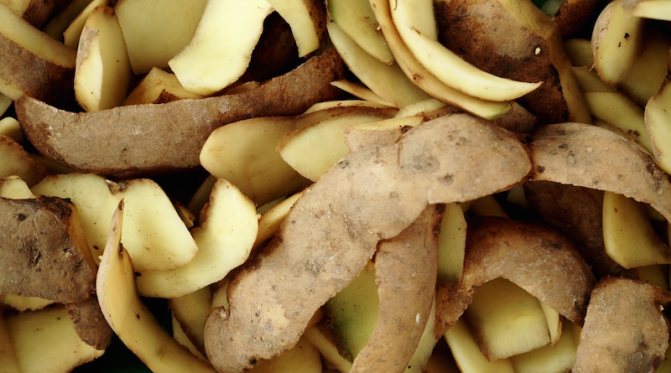

Potato peels soften the soot and cause it to flake off
There are many effective ways in which you can clean chimneys in a stove using folk remedies. The techniques have been tested for centuries and work perfectly in modern conditions.
Options for cleaning chimneys with folk remedies:
- Boiling water. The soot is porous and absorbs moisture well. Hot liquid is slowly poured into the pipe just before kindling. Upon further heating, the absorbed water boils, which leads to the destruction and exfoliation of the plaque.
- Rock salt. When saturated with sodium chloride vapor, the resins harden, crack and fall off the walls of the channel. Salt should be poured onto wood or embers. To achieve the desired result, it is recommended to perform the procedure on a weekly basis.
- A mixture of saltpeter and copper sulfate. The components are mixed in equal volumes with powdered coal. The agent is added to the working firebox. After exposure to vapors, the deposits become brittle and fall down under their own weight.
- Potatoes. Chopped tubers and peels are used. They are loaded on top of the burning fuel, and the starch fumes that are released soften the hard build-up. Subsequently, they can be easily removed with a brush.
- Naphthalene. This is an excellent tool, under the influence of which the soot is stratified and carried out by ascending currents. The downside is a persistent pungent smell that remains in the firebox.
- Aspen firewood. This type of wood generates a lot of heat when burned. Use aspen to burn off deposits up to 4 mm thick. If there is more soot, it can explode from extreme heat.
If folk methods do not work, you should switch to industrial production tools designed for such cases.
Chemicals
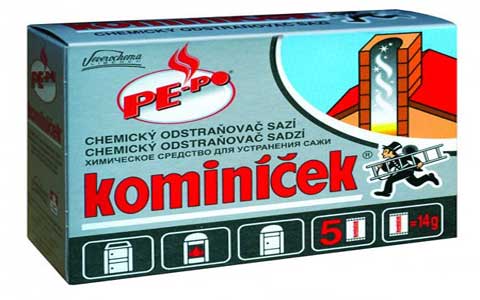

Chemicals change the composition of the soot and cause it to volatilize
Household chemicals for cleaning chimneys are effective, safe and easy to use. Some of the preparations have catalytic properties that cause a change in the composition of the soot and its complete combustion. Other agents act on resins, making them hard and brittle. Products can be purchased at specialized retail outlets and online stores.
Manufacturers offer consumers the following products:
- Granules. The most popular is the Kominichek cleaner produced in the Czech Republic. The pellets are placed directly in the packaging on the burning fuel. Under the influence of the released substances in the soot, a catalytic reaction occurs and it completely burns out.
- Polena "Chimney sweep". They contain components that soften solid deposits. Upon further heating, they evaporate and evaporate with the smoke. All that remains is to drain the condensate from the sump.
- Powders. Stacked directly into the firebox on firewood or coal. During the combustion process, the fuel emits smoke, which changes the chemical composition of the deposits. After that, they either burn out at a low temperature or become brittle.
After using chemicals, burn a couple of aspen wood in the firebox and ventilate the room well. This will remove fumes, odors and soot residues.
Instructions for use
How to use the chimney sweep log correctly and safely? The instruction is posted on the branded packaging of the product:
- Remove the log from the original packaging, without unrolling the protective wrapper, and put it in the firebox. Set fire to paper wrapper on both sides.
- In a closing stove, cover the door leaves; in a fireplace, use a protective grate.
- Wait until the bar has completely burned out (about 90 minutes).
- Remains (ash) of the bar should be left in the fireplace for the entire duration, about 1–2 weeks. During this time, you can use the stove (fireplace) as usual.
- After the procedure, it is recommended to ventilate the room.
What causes chimney blockages


If you do not clean the chimney for a long time, the diameter of the chimney will decrease and smoke will begin to escape into the room
Almost all stokers of boiler houses of multi-storey buildings and owners of their own mansions have to deal with a decrease in the section of the pipe due to the plaque formed on its inner wall. In this case, the chimney is immediately cleaned, since otherwise the fuel combustion may stop, and carbon monoxide will begin to flow into the room.
Chimney clogging can occur for the following reasons:
- Using raw firewood. After getting on the coals, they do not ignite immediately, but only after drying. During this period, the temperature in the firebox drops and resin evaporates from the logs. This substance does not burn, rising up it cools down, settling on the walls of the channel. Subsequently, solid particles of smoke adhere to the sticky resin, forming a dense substance.
- Poor cravings. Often this phenomenon is the result of design errors - a short, overly narrow or wide pipe, narrowing of the channel in the form of a bottle, the presence of a large number of elbows. Sometimes there is no thrust when there is calm, cloudy weather, accompanied by high atmospheric pressure. In such situations, combustion turns into smoldering with the formation of thick smoke that settles on the pipe.
- Incineration of household clothes, waste plastic panels, chipboard and plywood. These materials emit a lot of soot, which is why the chimney must be cleaned immediately after disposal.
- Fuel type. The least soot is emitted by firewood from deciduous trees, but their cost is quite high, which does not justify the purchase costs. Coal, spruce and pine are cheaper, but they contain resins that, when heated, turn into creosote, which is difficult to remove. To clean the chimney in the bath, you have to spend a lot of time and effort.
- The material from which the chimney is made.Most of all soot settles in brick channels due to their rough surface. Ferrous iron quickly rusts from acid, which forms when condensate and soot come into contact. The best options are ceramics, glass and stainless steel.
Compliance with all recommendations for the operation of the boiler does not guarantee that the chimney will always be clean. Sooner or later, you will have to get rid of soot.
The last stage of cleaning
Giving detailed recommendations on how to use the chimney sweep log, the instructions for use contain a detailed description of the mandatory cleaning stage - removing waste from the elements of the fireplace or wood-burning stove.
It will be necessary to thoroughly clean the stove (fireplace) two weeks after using the "Chimney sweep" log. During this time, all active substances will have time to exert the maximum possible effect on the deposits in the chimney. The soot softened by their action falls down.
At this stage, it is important to scoop out the fallen off soot from the bend of the chimney, the firebox of the smoke damper and other accessible elements of the fireplace (stove), the chimney will need to be inspected again. Fireplaces with curved chimney ducts need to be cleaned especially, otherwise the remaining soot can clog the chimney.
To remove cleaning waste, tools available to everyone are well suited: a vacuum cleaner and an ordinary fireplace brush.
Mechanical cleaning
Gadgets
Mechanical cleaning is used for large build-ups in the canal, and some tools are required for it: a brush, a scraper, a ruff, a weight, a cable, flexible shafts and flexible rods.
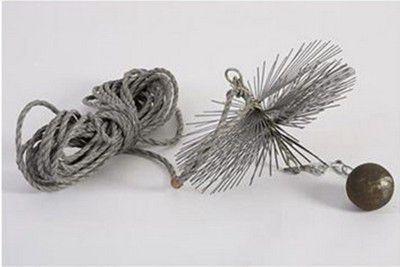

Cleaning accessories
- A scraper is needed for cleaning soot in accessible places in the chimney.
- The brush and the ruff are lowered on a cable, at the end of which a weight is tied.
- A core or weight is also needed to break through the channel if a blockage has already formed in it due to debris or soot deposits. The size of the weight must be large enough (occupy about two-thirds of the channel cross-section), and it must have a solid weight.
- A kettlebell, ruff or brush is attached to the cable using reliable carabiners.
Sometimes one of the devices is enough, but more often it is necessary to use several of them.
How much money is required for one cleaning
Another question that may arise for a person who uses the Chimney Sweep for the first time: how many logs do you need to burn at one time for more efficient cleaning? Manufacturers recommend burning one log for regular cleaning, and two for wide chimneys, but one after the other, and not simultaneously. It is allowed to lay two logs in one burnout for the first cleaning or removal of a large layer of settled dirt. But this should be done carefully, observing all fire safety measures.
How often should the cleaning be carried out with the help of "Chimney sweep" logs
It is recommended to carry out the cleaning procedure regularly, at least twice a year. The frequency of cleaning to a large extent depends on the frequency of use of the stove or fireplace. For example, if the fireplace is heated once daily, it is sufficient to carry out preventive cleaning twice a season, using one bar at a time. If the fireplace (stove) is heated no more than once a week, one log is enough for the heating season.
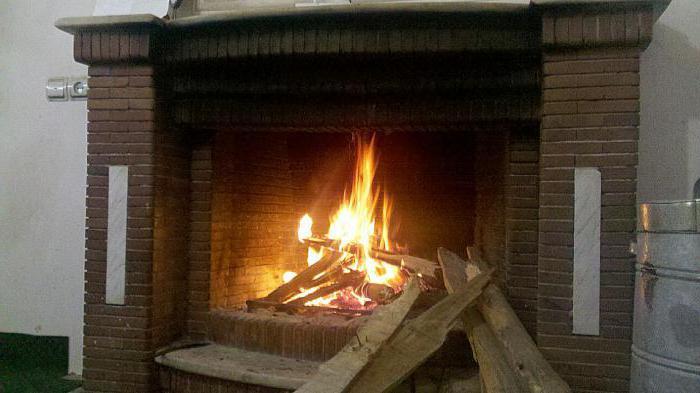

Mechanical cleaning
This method is also popular. In the old days, chimney sweeps used cores fixed with a cable. They punctured the dense build-up of soot. Ruffs of various shapes and scrapers were also used.
Cleaning process:

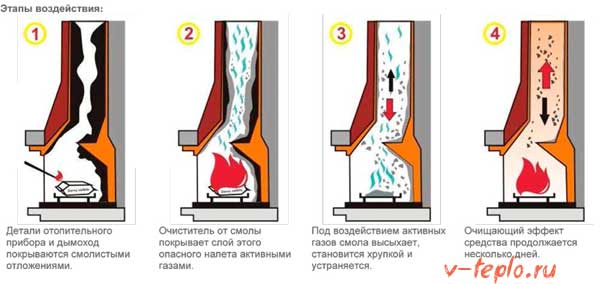
Close all oven doors. Put a dampened cloth on top of the fireplace compartment.- Open the flaps.
- Climb to the roof with a safety harness.
- Clean the chimney. Remove the cap and remove any layers with a scraper.
- Clean in hard-to-reach places with a brush. You can use a cable with a nozzle.
- With the suspended core, the chimney is effectively cleaned.
- Remove soot by opening the doors of the smoke channel.
- Clean the combustion and blower compartments.Clean open fireplaces from the side of the firebox with a metal brush with a long handle.
- After finishing work, light the stove, check the draft. Mount the head.
Chimney cleaner reviews
Of course, whatever is said on the official website from the manufacturer, it would be wise to listen to the opinion of homeowners who have tested this chemical in practice. What do the reviews on the repair and construction forums tell about the effectiveness of the "Poleno Chimney sweep" tool?
- In the experience of homeowners cleaning the chimney with this product, it makes sense to inspect the chimney for damage or cracks before the procedure. The burn-out temperature of soot when using chemical logs is so high that it can pose a risk of destruction for a faulty chimney.
- After burning out, an unpleasant chemical odor lingers in the room for several days.
- If the chimney (chimney) is heavily soiled with soot, a log will not help. Experts recommend mechanical cleaning at least 1–2 times a year. In a chimney, in which soot has accumulated for several years, a log can have the exact opposite effect: the dirt will collapse and clog the chimney.
- There is an opinion that the "Chimney sweep" log in terms of efficiency does not differ from peeling potatoes. The only difference is that where one bar is enough, you will have to burn at least half a bucket of potato waste.
- Sometimes specialists professionally engaged in chimney cleaning warn of the danger of acquiring a fake of this fairly well-known remedy. At best, the use of "counterfeit" simply will not have the desired effect, at worst - the substances from which the "fake log" is made can have a harmful effect on the health of the homeowner. You should focus on the presence of a certificate from the store that sells the "Chimney sweep" log tool.
Proven folk ways
The most effective methods include the following:
Rock salt... It perfectly cleans the channel, removes accumulated soot deposits from the walls. The substance in the amount of 100-200 g is put into the firebox in a thin layer. This technique is consistent with preventive maintenance work to remove soot in the chimney.
Potato peel... This remedy gives very good results. The cleaning bucket must be placed in small parts into the burning firebox. They begin to burn together with the starch that is part of the potato. Hot air enters the duct and loosens the soot. This technology is considered preventive. The subsequent cleaning of the chimney is done manually.
Weight with a brush attached to a strong cord... This element is lowered into the pipe, cleaning the inner surface and removing existing layers.
Birch or aspen logs... It is enough to heat the pipe with such pieces of wood to a high temperature. As a result, the soot will start to burn out.
This technique should be used with caution. With large deposits and low strength of the chimney, dangerous situations may arise, since aspen logs have high heat transfer.
Naphthalene... This chemical preparation perfectly cleans the inner surface of the chimney. To use it, you must first check the pipe for cracks. If there are any, they must be repaired. A naphthalene tablet is thrown into the furnace. The heated soot begins to fly out of the pipe in the form of white flakes.
It is important to remember that it is not safe to use mothballs as it can destroy pipes and ignite soot deposits. One of the disadvantages of this technology is an unpleasant, pungent odor.
High cleaning efficiency is achieved with a plaque thickness of no more than 10 mm.
Walnut shell... This is an excellent product with high heat dissipation. No more than 2 liters of a hard walnut shell should be thrown into the firebox.During combustion, the temperature rises to critical values, which can lead to deformation of the pipe and the appearance of cracks. Therefore, such a restriction is established. Due to the strong burnout, the soot is completely removed from the pipe.
Aluminum... Parts made of this material burn well in high heat and prevent the formation of soot. To prevent aluminum from changing its color and burning, the fire must be on coals. For example, it takes only five minutes to burn a can made of this non-ferrous metal.
How to clean a chimney in a private house
In case of severe clogging of the smoke channel, the first operation is to pierce the carbon with a core without additional devices. Only then are brushes of various sizes and designs consistently used.
When performing work, care should be taken to create a safe working environment.
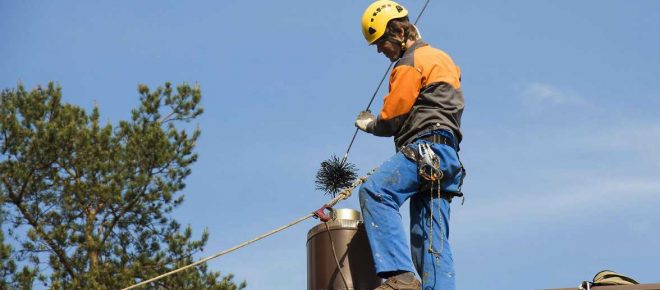

When working at height, be sure to fasten with a safety rope.
Video: how to clean a chimney in a private house
https://youtube.com/watch?v=mZ_DrH7-jpY
Chimney cleaning in the bath
The chimney in the bath is usually simpler. And most often it is made from stainless pipes, which requires special attention to its cleaning. In order not to negate its main advantage - high quality of the inner surface - you should clean only with soft plastic or brushes made of natural materials. The easiest way to handle straight pipelines, and in the presence of elbows - remember that there should be no more than two of them - you may have to dismantle the chimney, if it does not have special windows for cleaning during installation.
Otherwise, preventive measures and cleaning are done in the same way.
Cleaning the chimney from tar
Considering the composition of flue gases, you need to pay attention to two main components - water vapor from fuel and vapor of hard-to-ignite creosote. Mixing and settling on the walls of the smoke channel, they form a resin that is difficult to remove due to its viscosity and good adhesion to various types of surfaces.
The only effective way to combat resin deposits is to prevent its formation. For this, various means are used, produced specifically for this case.
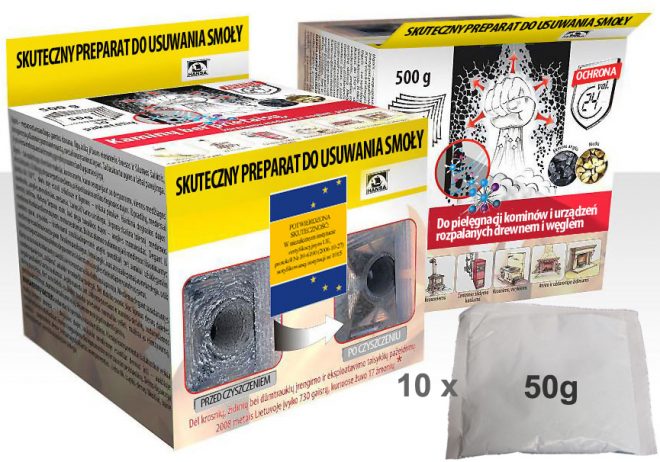

HANSA effectively protects chimney walls from tar formation
For example, the known composition of HANSA is a fine crystalline substance. Part of it turns wood into resin and water vapor, and the second, reacting with the resin substance, promotes its decomposition and combustion at the temperature in the oven. Residues of resin on the walls turn into a brittle crystalline composition that crumbles inside the furnace.
This composition is placed inside a burning firebox. The frequency of use at the beginning of the operation of the heating unit is daily, then you can switch to use once a week.
Cleaning a bent chimney
Bending of the flue duct is always a forced measure due to the structural features of the building. However, periodic cleaning is necessary. For this, elements are provided in the pipeline design, using which this operation can be performed easily and simply. These are special hatches, when opened, it becomes possible to access the straight section of the bend. It is not recommended to make the length of inclined sections more than a meter in size. The number of bends on one pipe should not exceed two.
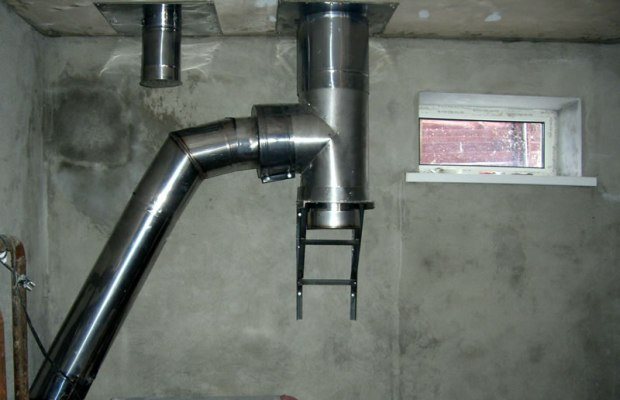

If there is no window for cleaning on the outlet bend, then the chimney will have to be disassembled
How to clean the chimney of a gas column
The reason for cleaning the chimney of the gas column is its banal clogging with a deterioration in draft. In a city apartment, this is all the more dangerous because the threat arises for many people at the same time. One of the signs of a deterioration in thrust is the "flapping" of the column igniter.
The process of cleaning the chimney from the gas unit is practically no different from such an operation with conventional chimneys. The same brush is used. Recently, vacuum cleaners of a special design are often used, which reliably clean the pipe surface and collect pollution products. In difficult cases, when layers cannot be removed with a brush or vacuum cleaner, special chemical agents are used to soften and remove them. Given that the use of prophylactic agents on the column pipe is impossible, urgent measures should be taken if signs of clogging are detected.
It must be admitted that the success of using solid fuel furnace equipment to the greatest extent depends on the correct operation of the units and the careful selection of fuel for it. In addition, it is necessary to regularly use preventive measures and know how to get rid of problems with clogged chimneys. Then stoves and fireplaces will delight you for a long time with the gracious warmth in the house. I wish you success!

